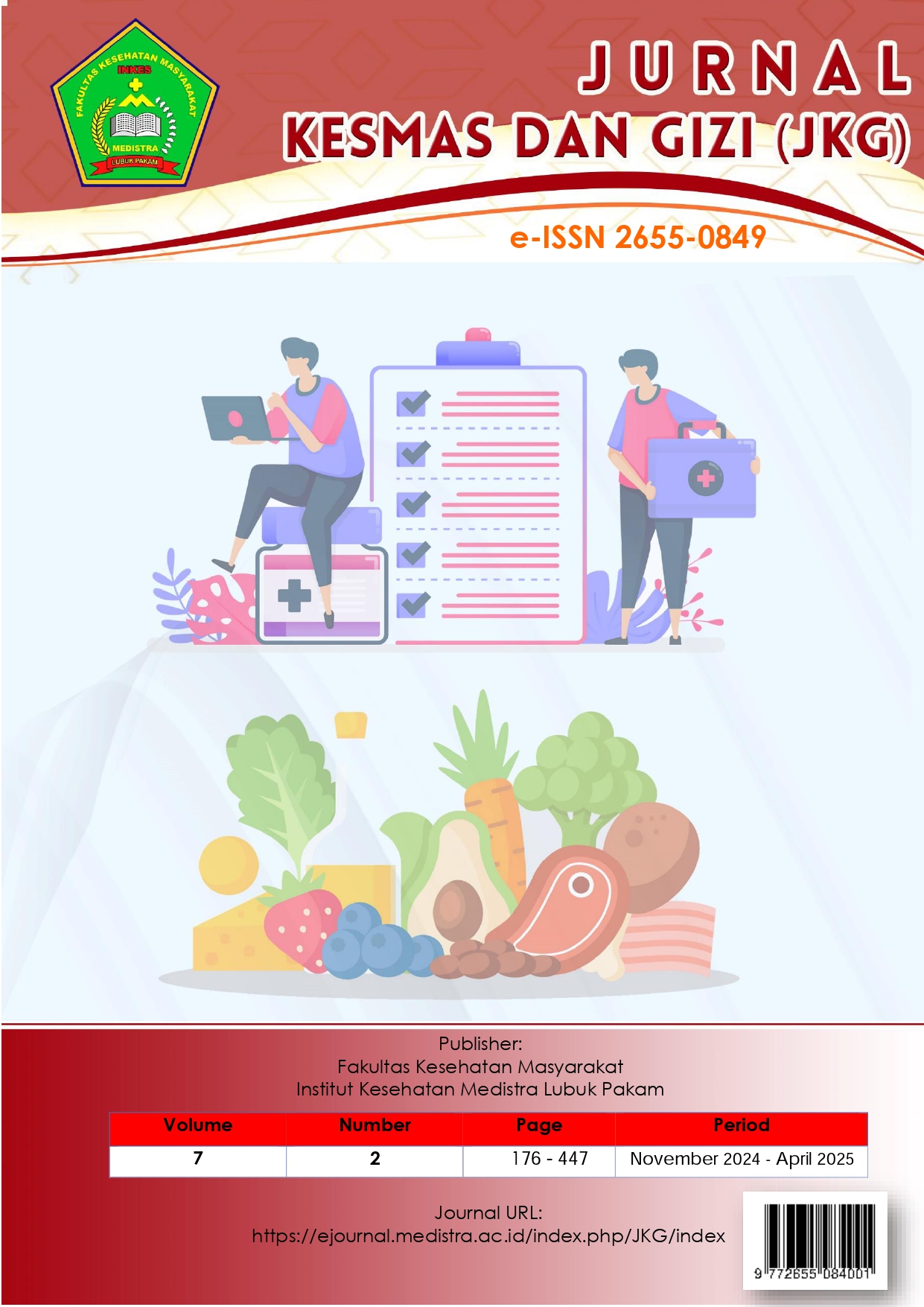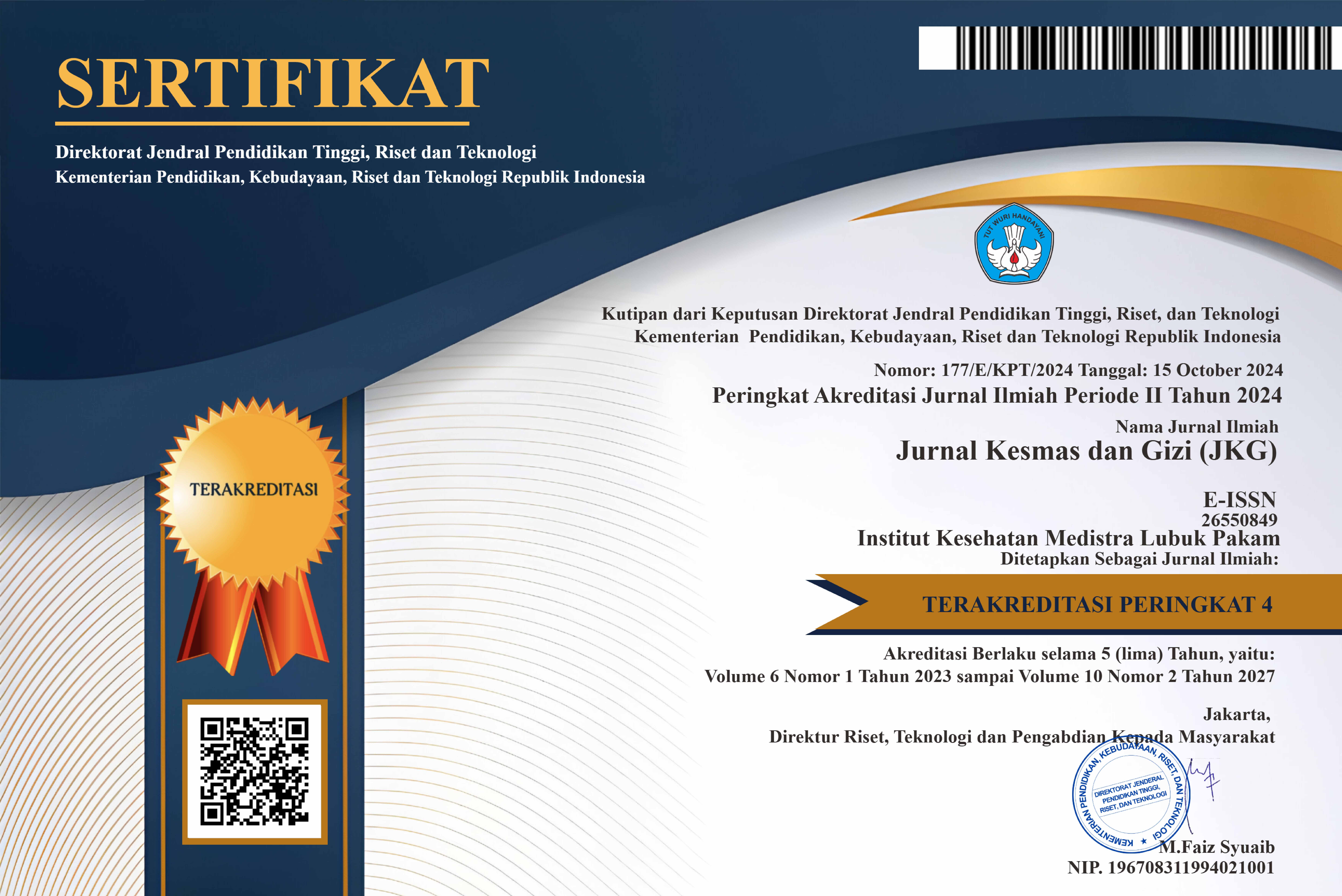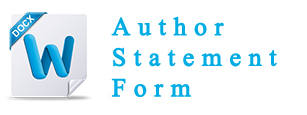Evaluation of Human Resource Preparedness and Internal Policies in the Management of Hazardous Chemical Waste
DOI:
https://doi.org/10.35451/n4hk1709Keywords:
: Hazardous Chemical Waste, Human Resource Preparedness, Internal PoliciesAbstract
Background: The management of hazardous chemical waste in healthcare facilities largely depends on human resource preparedness and the effectiveness of internal policies. Objective: This study aimed to evaluate the preparedness of human resources and internal policies in supporting hazardous chemical waste management at RS Grandmed Lubuk Pakam. Research Methods: This quantitative study with a cross-sectional design involved 44 respondents selected through stratified random sampling. Data were collected via structured questionnaires and document review, and analyzed using Spearman correlation and multiple logistic regression. Results: a total of 63.6% of respondents were categorized as prepared in hazardous waste management, and 56.8% perceived the hospital's internal policies as good. Bivariate analysis showed significant relationships between human resource preparedness (r=0.621; p=0.000) and internal policies (r=0.587; p=0.000) with waste management compliance. Multivariate analysis indicated that human resource preparedness (OR=6.65) and internal policies (OR=4.68) significantly affected compliance. Conclusion: Human resource preparedness and internal policies significantly influence compliance with hazardous chemical waste management; thus, continuous training, strengthened policy dissemination, and regular monitoring are recommended to enhance hospital waste management practices.
Downloads
References
World Health Organization. Safe management of wastes from health-care activities. 2nd ed. Geneva: WHO; 2014.
World Health Organization. Health-care waste. Geneva: WHO; 2020.
Kementerian Lingkungan Hidup dan Kehutanan Republik Indonesia. Peraturan Menteri Lingkungan Hidup Nomor 56 Tahun 2015 tentang Tata Cara dan Persyaratan Pengelolaan Limbah B3 dari Fasilitas Pelayanan Kesehatan. Jakarta: KLHK; 2015.
Kementerian Kesehatan Republik Indonesia. Peraturan Menteri Kesehatan Nomor 7 Tahun 2019 tentang Kesehatan Lingkungan Rumah Sakit. Jakarta: Kemenkes RI; 2019.
Kementerian Kesehatan Republik Indonesia. Profil Kesehatan Indonesia Tahun 2021. Jakarta: Kemenkes RI; 2022.
Achmad M, Priyanto D. Manajemen Limbah Rumah Sakit. Jakarta: Sagung Seto; 2020.
Widodo W, Sari RA, Purnamasari H. Hubungan Pengetahuan Petugas dengan Kepatuhan Pengelolaan Limbah B3 di Rumah Sakit. Jurnal Kesehatan Lingkungan Indonesia. 2020;19(2):85-93.
Daft RL. Organization Theory and Design. 12th ed. South-Western Cengage Learning; 2016.
Ismail R, Widodo W. Pengelolaan Limbah Bahan Berbahaya dan Beracun di Fasilitas Kesehatan. Jurnal Kesehatan Lingkungan Indonesia. 2021;20(1):45–53.
Siregar N, Hutagalung A. Tantangan Implementasi Pengelolaan Limbah B3 di Rumah Sakit Swasta. Jurnal Administrasi Kesehatan Indonesia. 2021;9(1):30-38.
Kementerian Kesehatan Republik Indonesia. Profil Kesehatan Indonesia Tahun 2021. Jakarta: Kemenkes RI; 2022.
World Health Organization. Health-care waste: factsheet. Geneva: WHO; 2020.
Notoatmodjo S. Pendidikan dan Perilaku Kesehatan. Jakarta: Rineka Cipta; 2012.
Robbins SP, Judge TA. Organizational Behavior. 18th ed. Boston: Pearson; 2019
Spencer LM, Spencer SM. Competence at Work: Models for Superior Performance. New York: Wiley; 1993.
Widodo W, Sari RA, Purnamasari H. Hubungan Pengetahuan Petugas dengan Kepatuhan Pengelolaan Limbah B3 di Rumah Sakit. Jurnal Kesehatan Lingkungan Indonesia. 2020;19(2):85-93.
Ajzen I. The theory of planned behavior. Organizational Behavior and Human Decision Processes. 1991;50(2):179-211.
Daft RL. Organization Theory and Design. 12th ed. South-Western Cengage Learning; 2016.
Ismail R, Widodo W. Pengelolaan Limbah Bahan Berbahaya dan Beracun di Fasilitas Kesehatan. Jurnal Kesehatan Lingkungan Indonesia. 2021;20(1):45–53.
Scott WR. Institutions and Organizations: Ideas, Interests, and Identities. 4th ed. Thousand Oaks: Sage Publications; 2014.
Schein EH. Organizational Culture and Leadership. 4th ed. San Francisco: Jossey-Bass; 2010.
McLaughlin CP, Kaluzny AD. Continuous Quality Improvement in Health Care. 4th ed. Burlington: Jones & Bartlett Learning; 2013.
Downloads
Published
Issue
Section
License
Copyright (c) 2025 Herlina Herlina

This work is licensed under a Creative Commons Attribution 4.0 International License.
Copyright in each article is the property of the Author.


























